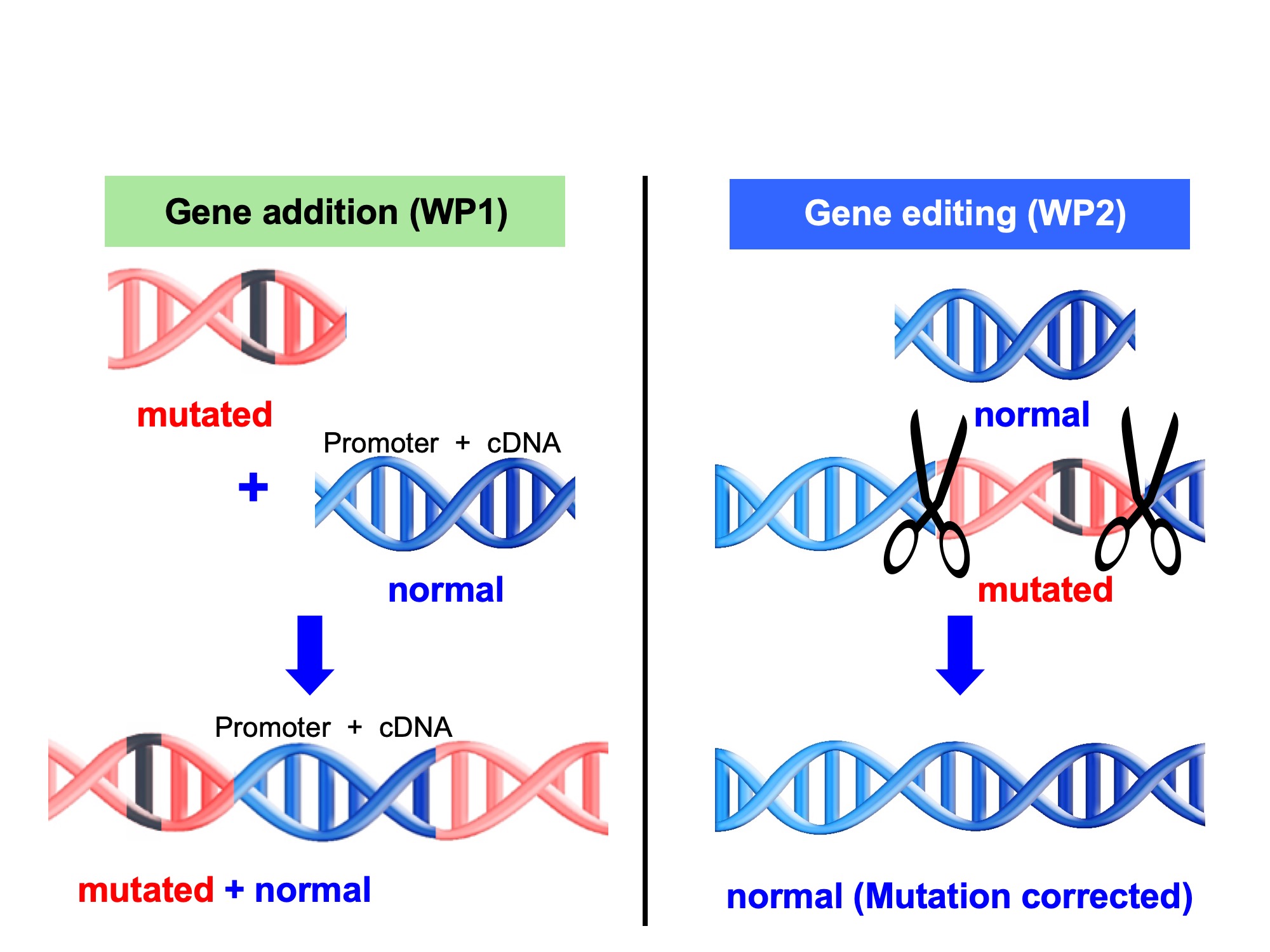Gene Therapy Approaches
The CRPP ImmuGene team will pursue two different gene therapy strategies:
(i) gene addition (WP1)
(ii) genome editing (WP2)

Overview of the two gene therapy strategies. Left side shows lentiviral gene addition (WP1). The mutated gene remains present after treatment, while the inserted functional copy of the gene rescues immune cell function. Right side shows genome editing (WP2). The mutated sequence is targeted and repaired
Work Package 1 - Gene Addition Therapies
For gene addition therapies (WP1), lentiviral vectors will be used, which insert a healthy copy of the gene into the patient blood building stem cells. After treatment, the diseased, i.e mutated gene remains in the patient’s stem cells. The newly added gene will restore the function of the treated stem cells and their daughter cells.
In WP1, a gene addition approach will be translated into the clinic within a phase I/II gene therapy trial. Gene addition approaches using such 3rd generation lentiviral vectors are promising with regard to long-term efficiency and safety.
Work Package 2 - Next Generation Genome Editing Therapies
Genome editing is the second and even more attractive approach for future clinical development, as it allows targeted correction of mutated genes, or targeted addition of corrective genes. Therefore, ImmuGene will develop such a gene editing approach in WP2 with the goal to translate this into clinical application in the second phase of the CRPP.
Next generation genome editing therapies are based on the recent discovery of the CRIPSR (Clustered Regularly Interspaced Short Palindromic Repeats) Cas technology. CRISPR-associated (Cas), RNA-guided nucleases can be engineered to cleave double-stranded DNA at a specific site, resulting in activation of endogenous DNA repair pathways. This nuclease activity can be harnessed to correct mutations in DNA sequences and thereby restore function of the targeted cells.
Within ImmuGene, these new treatments are the first step towards developing a platform technology to cure other monogenetic defects in different diseases of the immune system, as well as in other fields of medicine.